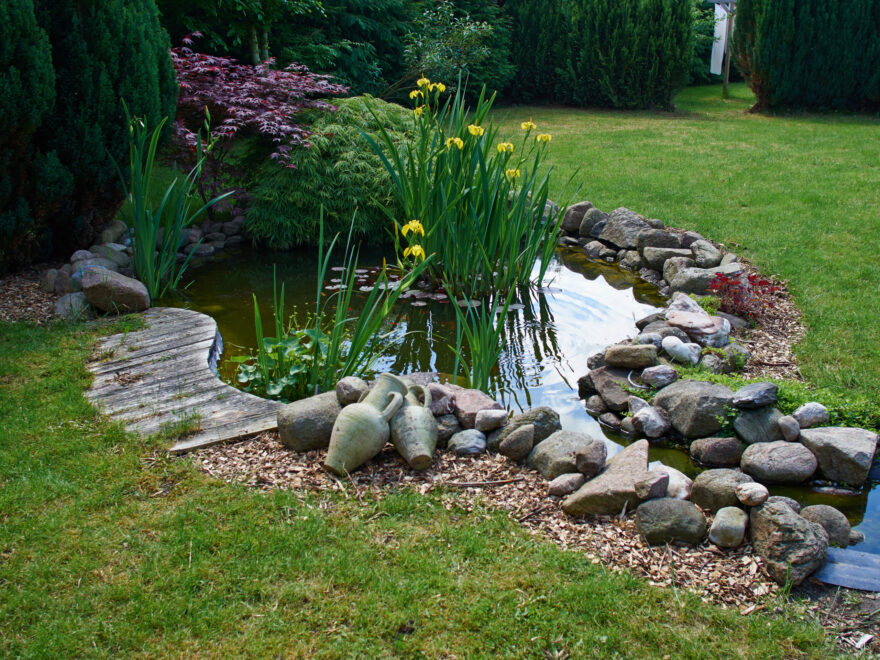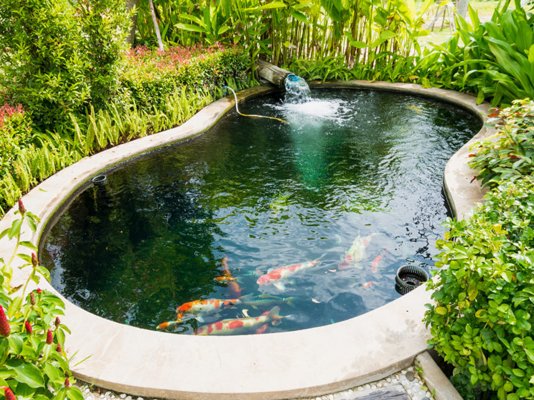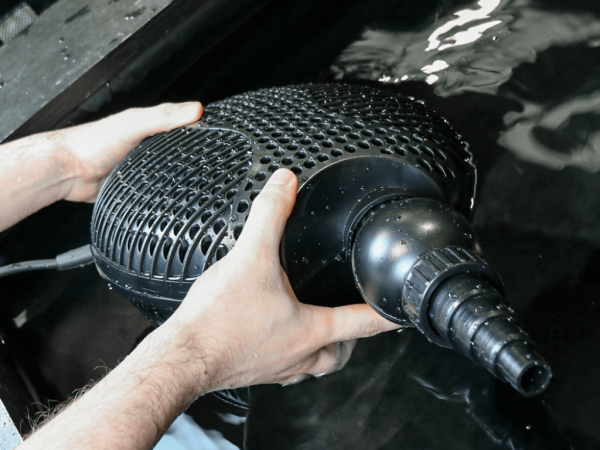Pond volume calculator - how many gallons are in my pond?
Knowing the volume of your pond is critical to stocking with fish, adding filtration, and treating the water.
Pond water volume is measured in gallons or litres, and pond product manufacturers will reference one or both on their packaging. But there are a few things to consider when working out pond size.
Gallons can be either Imperial gallons, used in the UK, or US liquid gallons, used in America. Confusingly the two measurements are different, with a UK imperial gallon being 4.55 litres, and a US gallon being 3.79 litres, so check which gallon a product is referring to and if you’re unsure use litres.
Water volume is a simple calculation, and pond volume can be as simple as multiplying the maximum pond length, by maximum width, by maximum depth. If you work in imperial then multiplying 10’x6’x2’ for example will give you pond volume in cubic feet. Then multiply by the number of gallons in a cubic foot (7.48 US, 6.23 UK) and you will have your answer. If you need to further convert gallons into litres, multiply by 3.79 for US gallons and 4.54 for UK gallons.
How many litres are in my pond?
If you work in metric then measure maximum pond length, width and depth in metres to give you cubic metres. There are 1000 litres in a cubic metre, so multiply the result in cubic metres by 1000 to give you litres. Let’s do some sums…
Pond volume imperial calculation
10’x6’x2’ = 120 cubic feet
120 cubic feet = 748 UK gallons
120 cubic feet = 898 US gallons
Pond volume metric calculation
3.05x1.83x0.61m = 3.40 cubic metres
3.40 cubic meters x 1000 = 3400 litres
So our 10x6x2’ pond holds 748 UK gallons, or 3400 litres, and equipment can now be chosen accordingly.
Still unsure? Don’t worry because the handy Swell pond volume calculator does it all for you.
https://www.swelluk.com/pond-volume-calculator.html

Things to take into consideration
When calculating pond volumes this way, we are assuming that they are rectangular, and cuboid in shape i.e they are 10’ deep all the way across, 6 feet wide all the way across, and 2’ deep all the way across, but unless the pond is made from bricks, blocks or railway sleepers, few actually are.
Most informal ponds vary greatly in depth and have average length, average depth and width quite different to their maximums. If this sounds like your pond, you could either remove a conservative chunk of that water volume, like 25% or calculate the volume in the swell volume calculator using average length, width and depth, for a more accurate idea of actual volume.
What if my pond is circular?
For circular, cylindrical ponds, use the calculator above (as if the pond was a cube,) but remove roughly 20% of that volume. Or for a more accurate figure use an online cylinder volume calculator.
Choosing a pond filter
You cannot over filter your pond, but you can have a filter which is too small, so always round up when choosing pumps, filters and ultraviolet clarifiers. For a 3400 litre pond, a filtration package for ponds up to 4500 litres (1000 UK gallons,) would be best, or if you intend on adding koi carp, which grow huge and create a lot of waste, you could even double it and choose a filter for 7000 litres (1542 UK gallons,) or more.
Adding fish pond medications
When adding fish disease treatments it's a good idea to dose the correct amount, as too little and it may not be effective, and too much and it may harm the fish and beneficial filter bacteria. Follow the water treatments dosing instructions carefully, check and double-check pond volume first on our calculator.
For super-accurate pond volume calculation, attach a water meter to your hosepipe when filling.










Comments 2